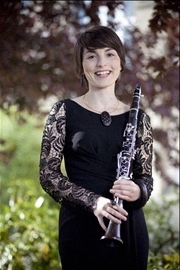Tutor HuntResources Clarinet Resources
The Role Of Research In Instrumental Tuition
Date : 03/01/2014
Author Information

Uploaded by : Lucy
Uploaded on : 03/01/2014
Subject : Clarinet
The whole idea of `research` in a performance practice context is a fairly complex one if only because research can be defined in many ways. For me, the definition of research that is `exploration beyond what is already known` fits the context of our discussion today pertinently. This definition was made by Robin Bowman in his essay `Performance teaching as a form of research` in the 2005 book `The Reflective Conservatoire`.
With this definition in mind, it seems to me that across colleges and schools at every moment there is research taking place. Be it within master-classes, lessons, classes or in the library the idea of exploring beyond what is already known seems at the heart of the conservatoires education. For me, one of the biggest changes in education between school and conservatoire level is the emphasis on exploration and experimentation. At conservatoire level I found this style of education was much more prominent than before, especially within my principal study lessons.
Before I studied at University there was a symptomatic approach to my learning in my instrumental lessons. That is to say, I would learn the notes on a page of music, use the fundamentals of sound production that had been dictated by a teacher play the notes and then the teacher would tell me what I did incorrectly and then how I should play it `correctly`. Of course, there is arguably a place for this kind of teaching perhaps when a pupil is about to take an exam and there isn`t sufficient time to teach In a more holistic and exploratory manner however this is an issue that comes with much debate. My point is that when I entered higher education there was a total shift in philosophy and my instrumental lessons gave time for me to understand such issues as why does this embouchure produce a certain sound and how do I create a darker tonal colour? For the first time I was beginning to analyse my own playing and given the opportunity to experiment with different sounds.
Having reflected on the way I was taught before studying at University as discussed earlier I have shaped my teaching methods around creativity and exploration. At beginner level, I consider the opportunity to explore the instrument to be integral to the pupils engagement and development. When teaching beginners I often give a 2 minute `timeout` in any 20/30 minute lesson where the pupil can experiment with what they have been learning or simply acting on any ideas that arose during the course of the lesson that are unrelated to the specific areas covered. I have found this technique very successful, not only allowing the pupil to have more focus in the structured parts of the lesson but also it encourages a freedom In their learning to explore the instrument without having any contentions about playing `the correct thing/in the correct way`. I have also found that the pupils that I have used this method with approach their independent learning at home in a similarly explorative manner.
I also approach finding solutions to issues of fundamental technique and sound especially with older student with a research focus. For example, with one sixth form pupil there was a problem with her embouchure being too restrictive. Overly restrictive embouchure can often be adopted when students try to prevent squeaks, have some tension problem or when they don`t have enough diaphragmatic support. To encourage openness in the embouchure and throat and improved tone I asked the pupil to adopt a very loose embouchure (producing a flat pitched unfocused sound) and to whilst blowing through the instrument gradually firm up the embouchure until she felt the sound was improved and as the pupil wanted it to sound. We would then evaluate the process together and repeat the desired embouchure to ensure that it was reproducible. I also recorded a note played by the pupil played with the two different embouchures so that she could hear the difference in sound and produce her own opinion about what sound she wanted to create. In this way the pupil understands why an unrestricted embouchure is of benefit and how to form it. It was through research lead by myself but evaluated by the pupil and thus the changes the pupil has to make are not dictated by the teacher, they are `discovered` by the pupil herself. This encourages a flexible and creative approach to the pupils musical development and has simultaneously built and broken physiological boundaries for the embouchure.
This research approach whilst teaching also allows me to gauge the strengths/weaknesses in a pupils analytical skills and creative areas for development enabling me to understand the pupil better as a musician, rather than just as an instrumentalist.
`It is helpful to remember that what the student does is actually more important in determining what is learned than what the teacher does.` (Schuell 1986:411)
This resource was uploaded by: Lucy
